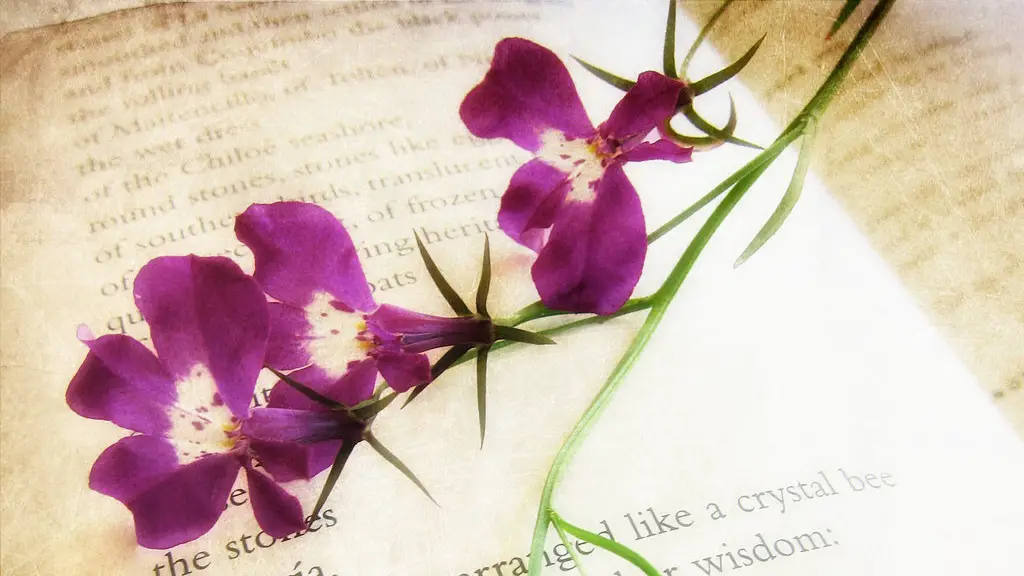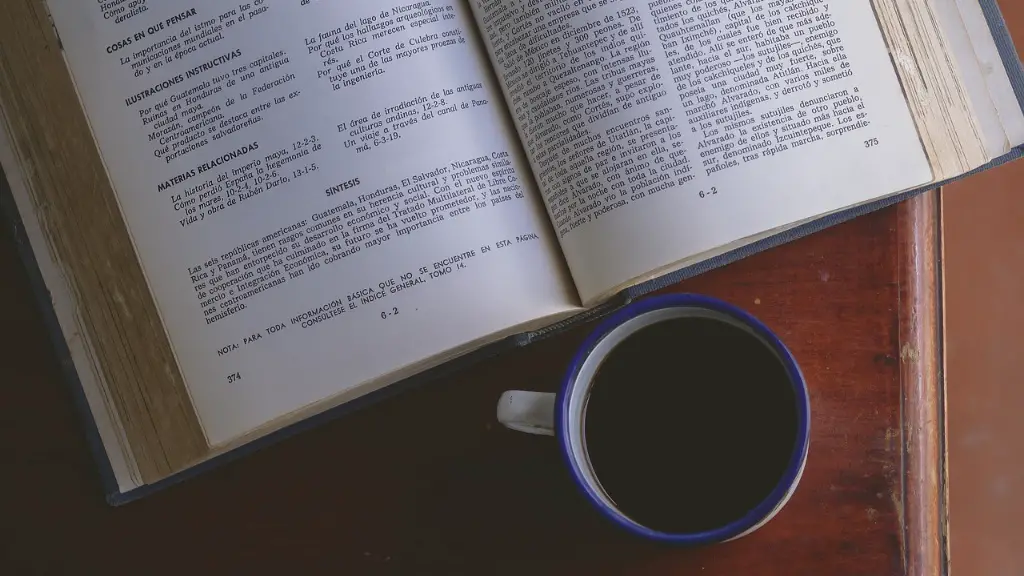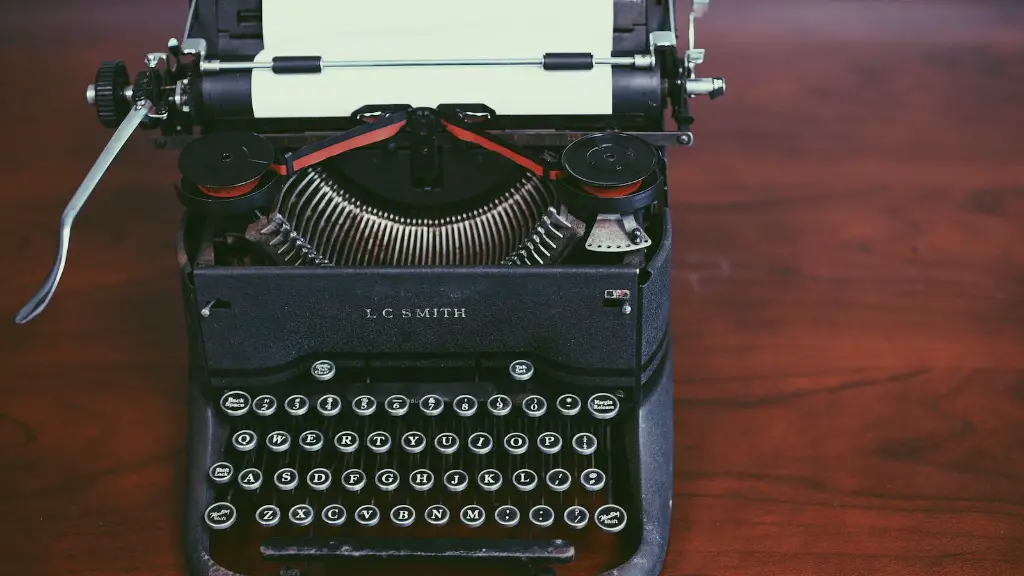What is Poetry?
Poetry is an art form that has been around for centuries. It is a type of literature which uses aesthetic and often rhythmic qualities of language such as visual, audible and semantic aspects to evoke meanings beyond what is commonly expressed in ordinary language. Poems can be written in any form, whether traditional or free verse, and can express a variety of emotions and ideas. Pause, pauses and usage within poetry lines are very important to the overall structure and impact of a poem.
What is the Purpose of Pauses?
The use of pause within a line of poetry serves a handful of different functions. It is important for a poet to understand the various kinds of pauses and their purpose, so that the poem’s meaning is expressed clearly and accurately. One of the most common ways pause is used is for emphasis. By pausing at particular points in a line it can give particular words and phrases extra emphasis, so that a reader will understand the poet’s intent. A pause may also be used to create a cadence or accent the poem’s mood, especially when it comes to rhythms like iambic pentameter. Additionally, pauses can be used to give a poem a natural, conversational flow and make it easier to comprehend.
Types of Pauses
There are a few types of pauses that have been identified and analyzed by writers and readers. One type of pause is a caesura, which is a break that occurs between two words or phrases. This pause typically comes in the middle of a line and it marks the division of the line into two distinct parts. Another type is an end-stopped line, which is a line that ends in a pause. This is a more traditional form of poetry, as it is often seen in works such as Shakespeare’s verse, and it emphasizes rhythmic structure. Lastly, there is an enjambment, which is a pause that occurs between two lines and is often used to emphasize a shift in thought.
Pauses Within a Line of Poetry
When a pause is used within a line of poetry, it can change the overall meaning of the poem. For example, if a poet wanted to convey a feeling of sadness they could create a soft and tender pause in the line, while if they wanted to convey a feeling of pain or anguish they could create a hard and abrupt pause. Pauses can also be used as a form of punctuation, as a way of giving a particular phrase or word extra emphasis, or to convey a specific emotion.
Analysis of Emotional Impact
The use of pauses within a line of poetry can have a significant emotional impact on the reader. Depending on where the pause is placed in the line, the reader can experience a different emotion. One of the most powerful emotions that can be elicited when a pause is used is suspense. By building suspense in the poem, a poet can keep their reader guessing as to what will come next. This can engage the reader and keep them focused on the poem until the point where the climax or resolution of the poem is reached.
Impact on Readability and Clarity
Pauses within a line of poetry can also have an effect on the readability and clarity of the poem. By creating a pause, a poet can break up a line that might otherwise be too long or difficult to comprehend. In doing so, they are able to make the poem easier to read and understand. It’s important to note, however, that a pause should not be used too often within the same line, as this can make the poem less enjoyable to read.
Factors to Consider
When using pauses in poetry, it is important for a poet to consider a few factors. Firstly, the poet should consider what type of pause they want to use, as each type can have a different emotional impact and effect on the poem. Additionally, the poet should make sure that the pause does not interrupt the flow of the poem, as this can make the poem less enjoyable to read. Finally, the poet should be aware of how their chosen pauses will affect the overall rhythm and cadence of the poem, as this can have an impact on the poem’s meaning and clarity.
Purposive Usage
The purposeful use of pauses within a line of poetry can have a significant impact on the reader. It allows a poet to convey their ideas and feelings in a more meaningful way, and it also helps to make the poem easier to comprehend and enjoy. By understanding the various kinds of pauses, as well as how each type can be used, a poet can ensure that their poem is as effective and impactful as possible.
Objective Reflection
Objectively reflecting on the use of pauses within a line of poetry can help a poet gain a deeper understanding of their craft. By analyzing their own work, a poet can identify which pauses work best and which could possibly be improved upon. Additionally, a poet can gain insight into which kind of pause has the most powerful emotional effect and which type of pause is best suited to the poem’s overall tone and meaning.
Style Considerations
The use of pauses should also be considered with regards to a poet’s style. For example, some poets may prefer to craft their poem in a traditional style, using end-stops, whereas other poets may want their poem to be more contemporary, utilizing techniques such as caesuras and enjambments. Whatever the style, it’s important for a poet to consider the various kinds of pauses and how they can best be utilized.
Advanced Techniques
For a more advanced approach to using pauses within a line of poetry, a poet can experiment with techniques such as multiple pauses or line breaks. For example, a poet can create multiple caesuras in a single line in order to emphasize particular words or ideas, or they can use an enjambment to lead the reader into the next line. Additionally, a poet can use multiple pauses within a single line to create a feeling of musicality and rhythm, or they can use multiple line breaks to create pauses of different lengths.
Experimentation
Experimenting with the use of pause within a line of poetry can be an effective way for a poet to hone their craft. By exploring different types of pauses and incorporating different techniques, a poet can create poetry that is more meaningful and impactful. Additionally, experimentation can allow a poet to gain a better understanding of how their chosen pauses can be used to emphasize certain ideas or emotions, as well as how they can best be utilized to convey the poet’s overall message.



